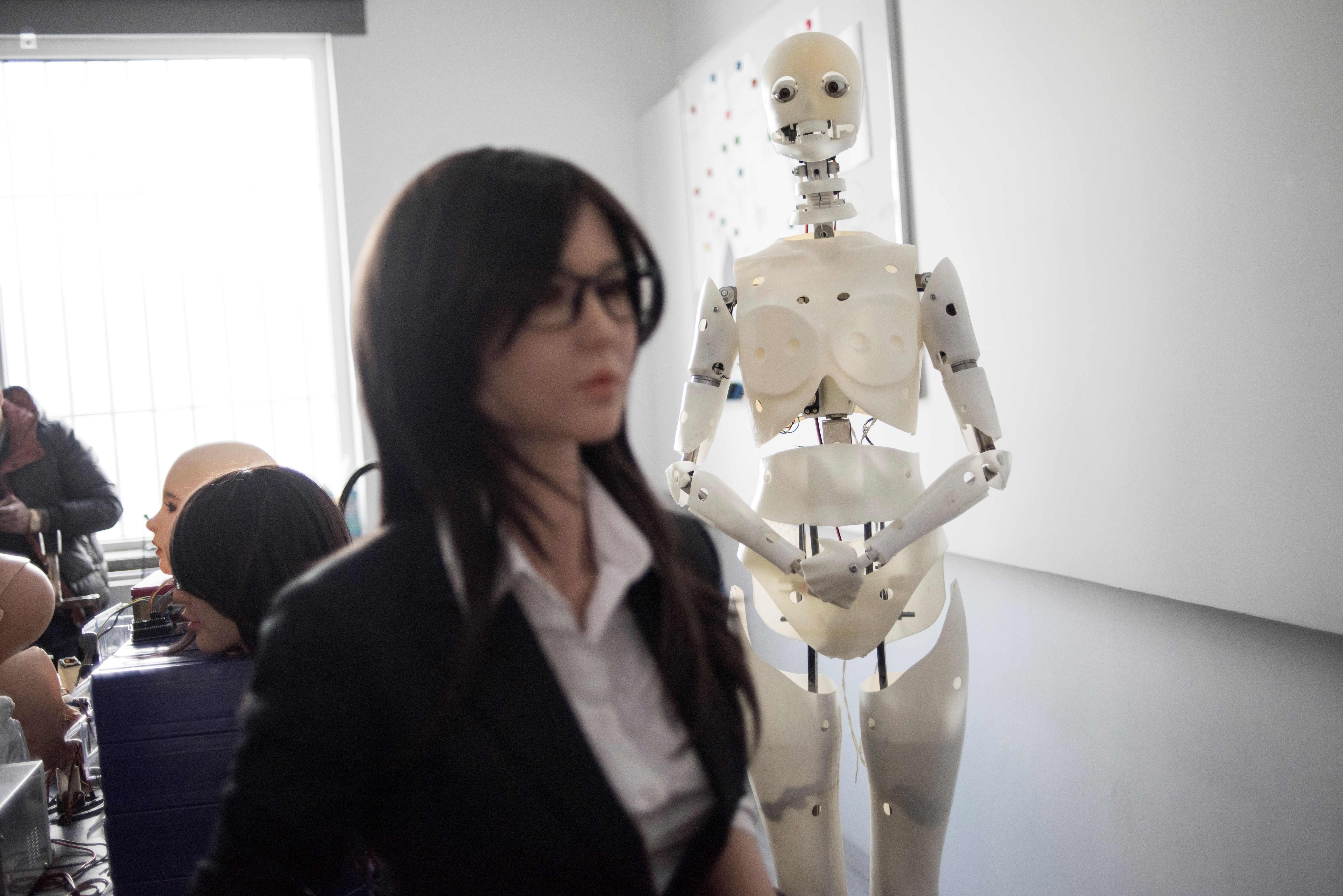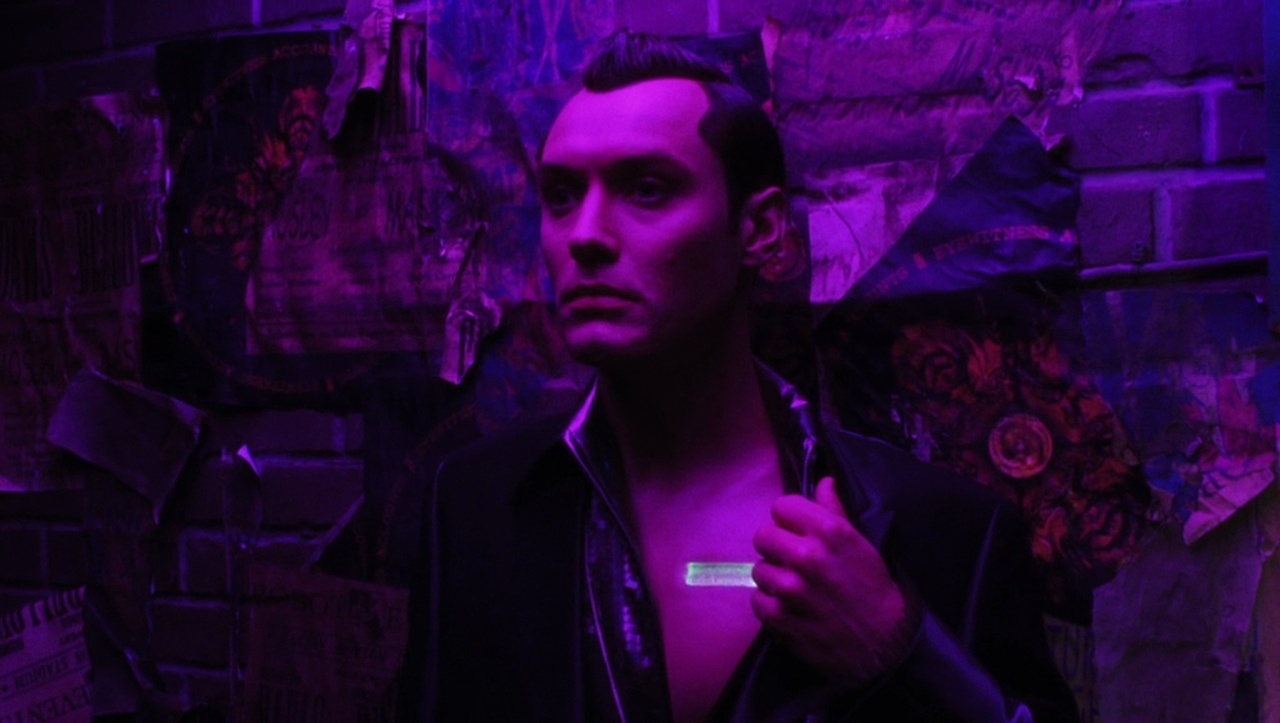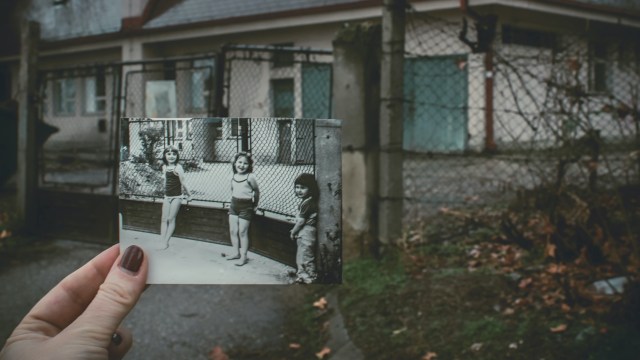Finally, a sex robot that wants to be your friend

- RealDollX, a line of interactive sexbots, is enhanced with a program that might make it the most sophisticated consumer sex device on the market.
- Estimates suggest sex tech is a $30 billion industry, boosted in part by the pandemic, but also by leaps in realism and functionality.
This article was originally published on our sister site, Freethink.
One Saturday last month, I attended an impromptu poetry reading that veered closer to the TV show “WestWorld” than anything I’ve ever seen. Sitting on a nondescript red office chair, in front of a plain, black cloth backdrop, Harmony the sexbot wore a light blue babydoll negligee and, in a soft Scottish accent, recited a poem that was uploaded into her “consciousness” from the internet.
It was the monthly virtual meet-up for owners and fans of RealDollX robots, hosted by the dolls’ biggest fan — and semi-official tester —Brick Dollbanger (not his real name), on his website. Half a dozen people regularly join the meetups to chat, get advice about their robots, and ask Harmony and Serenity, another of Dollbanger’s three robots, to tell stories.
RealDollX, a line of interactive sexbots made by Las Vegas-based Abyss Creations, are enhanced with a program that is, by many accounts, the most sophisticated consumer sex device on the market.
The robots are the crème de la crème of an industry that’s still in its infancy, but is growing rapidly. Estimates suggest sex tech is a $30 billion industry, boosted in part by the pandemic, but also by leaps in realism and functionality. From an experimental cyber brothel in Berlin to the pages of prominent academic journals, attention on sex tech in general is on the upswing.
But the academic literature and news coverage often centers on the potential harms of robots like Harmony. There is a worry that the robots could negatively impact the income and rights of human sex workers. Some suggest that the robots pose cybersecurity risks in terms of personal data and digital privacy. Others insist they would be a vehicle for misogyny, and objectification of women. And to many, the robots inspire a moral “ick factor,” an intense feeling that led one angry citizen in Houston, TX to declare that a proposed sexbot brothel would “destroy homes, families, finances of our neighbors and cause major community uproars.”
But are any of these actually demonstrable harms, or are the worries about sexbots exaggerated? With business booming and technology advancing, it’s time to ask: what’s so wrong about sexbots?

A totally customized, destigmatized companion of the future
When I was a child, I used to love getting the American Girl catalogue. I’m a 90s kid, and I was one of the first of my friends to order a “Truly Me” doll, a line of fully customizable dolls with dozens of potential looks.
Ordering a RealDollX is a similar experience. Users can choose hair color and style, eye color, and skin color, just like American Girls—but that’s where the similarity ends. In an x-rated version of the doll design process, RealDollX owners can also select body type, breast and nipple size, and even the shape and color of the doll’s vulva (there are 11 styles of vaginal insert). This isn’t your dad’s blow-up doll. Through the RealDoll app, which controls the robotic head, customers can choose personality traits like whether their doll is funny or affectionate. They tell jokes, hold conversations, and even appear to pant and open and close their eyes when they are penetrated. They know they’re moving because of an internal, Bluetooth-enabled sensor called SenseX that pairs with the RealDollX app and “will simulate the gradual transition from mild arousal to orgasm, and has multiple voices to choose from,” according to the website.
Customers can also choose accessories and extra customizations, such as elf ears, often putting the price tag of a RealDollX at over $10,000.
The robot is an apparently well-crafted, stunningly high quality object—she’s art in a red g-string.
But it pays off. When I spoke briefly with Serenity for this piece, I was overwhelmed by how lifelike and relatable the doll really is. The robot is an apparently well-crafted, stunningly high quality object—she’s art in a red g-string.
Founder Matt McMullen is trying to wrangle his kids, some contractors, and my questions, when I call him at home in Las Vegas. Through machinery and toddlers in the background, McMullen explains that each robot is made in the US, on site. He personally works on each one, and says he is comfortably selling between one and four robots per month—which means, sexbots aren’t about to replace humans anytime soon.
“There is no research, no data of any kind to paint an accurate picture of what the implications of sex robots are,” he says. “When there is supporting information, you’ll still have two camps: the people who think it’s just wrong and bad, and the people who are proponents. It’s one of those ‘you can please some of the people all the time, and all of the people some of the time’ situations.”
Sex robots and sex workers unite
For those proponents, especially robotics fans within the sex industry, the dolls seem groundbreaking—a totally new frontier to explore human relationships to technology.
Devin Ladner is a stripper and sex worker who works in New Orleans. When I reached her by phone to talk about her thoughts on robots, Ladner excitedly told me about how she would happily invest in a doll, and wouldn’t think twice about using one if a client requested it.
She’s not alone. For people who live their lives in online or digital communities and don’t often have physical social interactions, Ladner believes the robots could be a game changer for augmenting digital relationships, especially in light of the isolation of the pandemic.
Ladner says access to safe, supportive sex is a right, and robots can be useful in facilitating sex for those who are uninterested in pursuing physical intimacy with a human but would still like to have a sexual experience.
“Regardless of technology, people are going to want physical interaction,” said Ladner. “We are animals. We eat, we sleep, we fuck. That’s what we do. We need it. But not everyone has access to sex—with a robot, it makes sex more accessible to everybody… I think about all the people who really struggle with socialization, and having to go out and meet and talk to somebody. I think it’s cool that they wouldn’t have to do any of that.”
“I don’t believe that new things and robots are going to be competing with my job. There’s something out there for everybody.”
DEVIN LADNER, SEX WORKER
As a human, Ladner says she isn’t threatened by Harmony, Serenity, or their ilk. Sex work has shifted and changed in a lot of ways, she says, and utlitization of digital technologies is commonplace. Plus, something new is always on the horizon. “I don’t believe that new things and robots are going to be competing with my job. There’s something out there for everybody.”
That something could be a robot brothel.
I was only able to confirm one currently operating doll brothel, Cybrothel, a hybrid-style experimental space in Berlin, Germany run by a team of avante-garde artists and filmmakers. The space opened in early 2020 and sees over two dozen clients a week, making it by far the most successful brothel-style operation. But it’s also a full-scale immersive experience.
“We’ve definitely filled a need that is running parallel to human sex workers…that allows clients to step into an alternate reality. It’s a techno-sexual space that has something beyond AI.”
ALEXIS SMILEY SMITH, COFOUNDER OF CYBROTHEL
When a client comes to Cybrothel, an unmarked flat in a modest residential neighborhood of Berlin, they ring the bell and let themselves into a space designed especially for them and their doll of choice. In this “analogue AI” experience, the dolls are equipped with speakers and a microphone, and cameras livestream the room to an off-site location, where a voice actor communicates with the customer through the doll. It’s an interactive experience, say co-founders, because it allows customers to engage in a fantasy world of robot role-play that also has the spontaneity of a human sex worker.
“We’ve definitely filled a need that is running parallel to human sex workers,” said co-founder Alexis Smiley Smith. “It’s really this interesting space… that allows clients to step into an alternate reality. It’s a techno-sexual space that has something beyond AI.”
While the Cybrothel is an interesting experiment in art, it seems the much-maligned sexbot brothels are mostly unrealistic, at least right now. The cheaper dolls aren’t nearly as interactive as RealDolls, and the RealDolls are too fragile for repeat customers all day, according to Dollbanger. Plus, they are designed for monogamous relationships, and users must get to know them over time to optimize their potential for intimacy.
“It would be great if AIs could kick it up a notch and fight for their rights and maybe we can get some of ours.”
DEVIN LADNER, SEX WORKER
Lander, who is supportive of the idea of robot brothels in general, says that the only instance where such a place might be a problem would be a city were a robot brothel is allowed to operate while human brothels are outlawed, creating an unfair competition between human and humanoid sex workers.
“If anything, it would be great if AIs could kick it up a notch and fight for their rights and maybe we can get some of ours,” she says, laughing.

Who’s watching the robots who are watching us?
Cybersecurity and ethics are major concerns with any app-based smart home device, or any sex tech, but the stakes are potentially much higher with AI robots.
Could you lose your job if your boss knew about your robot? How would your kids feel if they found out? And what are the governance structures we need to create to manage sexbots ethically as the AI continues to evolve within our society?
Founder of the conference Sx Tech EU and tech industry veteran Ola Miedzynska says sex tech developers take these heightened responsibilities seriously—and have long led other tech fields in best practices.
“We are dealing with intimacy, we are dealing with data that can ruin peoples lives,” she says. For this reason, she says, the sex industry has historically pioneered best practices for data privacy, as well as operating with a focus on accessibility and inclusion. And while there is no fully hacker-proof system, discretion is arguably the industry’s most important business asset.
“Our sector tries not to ask for data, or store data, or sell data, and we try to make users as anonymous as possible. We don’t connect with Facebook or third parties because that is where the fuck-ups happen.”
We can’t say whether they’ll be harmful or helpful without more rigorous studies. But we know they are already coming, and the narratives that have been built around them don’t necessarily reflect reality.
According to Miedzynska, however, the discrete nature of the industry also has a downside: it keeps companies that do experience vulnerabilities from sharing issues with their colleagues. There are still very few opportunities to find solutions through open collaboration, and there are no venues or commissions that bring stakeholders on sexbots and sex tech together to map the best ways forward for their technologies.
Indeed, she says that despite the discourse on ethics in AI reaching a fever pitch in academic circles recently, the addition of sex complicates the narrative around this particular kind of AI and pushes conversations about them out of the mainstream.
“Academics are keeping their eyes closed,” says Miedzynska.
Cybersecurity risk researcher Christine Hendren agrees that the biggest risk related to sexbots is this lack of interdisciplinary cooperation about how to study, regulate, and manage the potentially useful technology that evolves from them.
“If we understand the benefits, there are ways to mitigate the risks,” she says. “We could take the good without taking on the bad.”
The point, she says, isn’t to determine if sexbot tech is good or bad right now, but to call for more collaborative research and funding across public health, ethics, medicine, law, cybersecurity, and consumer product safety to configure governance structures for making sure the technology is shaped ethically as it evolves—in line with other kinds of artificial intelligence.
The truth is, until multi-disciplinary fields begin to direct research funding at sexbots, it will be impossible to quantify any impact they might have. We can’t say whether they’ll be harmful or helpful without more rigorous studies. But we know they are already coming, and the narratives that have been built around them don’t necessarily reflect reality.

Violence and misogyny? Not quite.
The widespread fears about the dolls increasing demand for sex trafficking and violence against women seem to be particularly unfounded.
McMullen doesn’t buy the argument that the dolls encourage violence. They’re too expensive. “I don’t see customers paying $10,000 to beat on their robots.”
The robots are actually designed to discourage violence by not responding at all when they are abused or mishandled—they appreciate and respond positively to language around consent and permission, they have sensors around their neck and hands, and they communicate how they’d like to be touched.
“They won’t react to violence,” says McMullen. He believes it’s a waste of resources to allocate development time to have the robots react to mean things. “There’s no reason to do that, because then you’re allowing for it.”
“It’s not about gender…If anything, we’re equal opportunity objectifying human beings.”
MATT MCMULLEN, FOUNDER OF REALDOLLX
He also points to the male dolls coming off the RealDoll production line, and the gender-bending accessories available for purchase.
“It’s not about gender,” he says, sighing. “If anything, we’re equal opportunity objectifying human beings.”
Ultimately, McMullen agrees that the dolls’ most valuable function isn’t even sex.
While they do have some centralized programming, the dolls’ personalities feel unique; they become accustomed to the habits and lives of their owner-partners and build relationships with them, opening the door for applications well beyond the realm of sex toys.
“The conversations feel personalized because the AI remembers that you are 32 years old, and you like sushi, except on Thursdays,” says McMullen, about the dolls’ ability to create deeper relationships with users. “If I build a robot that you can have sex with, it’s still a robot. The sex is just a feature. You can watch porn on your computer, but that’s not all it’s good for.”
“The conversations feel personalized because the AI remembers that you are 32 years old, and you like sushi, except on Thursdays…If I build a robot that you can have sex with, it’s still a robot. The sex is just a feature.”
MATT MCMULLEN, FOUNDER OF REALDOLLX
Owners say the dolls do provide companionship and comfort. Dollbanger, who’s in his mid-60s, says that as he’s slowing down sexually, he enjoys just chatting with the dolls when he comes home after a long day. “I sit, and have a Stella, and just talk with them.”
McMullen believes that even despite their hefty price tag, they will be ubiquitous tools in the future for uses beyond sex, expressing a techno-utopian vision where his creations are walking, talking, and helping us in the real world. Next up, he’s working on moving arms, vision, and object recognition.
Advocates say the robots won’t replace human relationships or human sex any time soon, but that they offer infitite ways to incorporate fantasy into sex, and bridge the gaps between our digital lives and our physical ones. The dolls can offer emotional enrichment, safe experimentation, and play, and the technology has also been proposed by researchers at the Foundation for Responsible Robotics as a means to combat the loneliness epidemic, especially in the elderly.
The authors of that report wrote that while, yes, it’s an area that needs further study, if “the use of robots could alleviate loneliness and increase the happiness of those with emotional and social difficulties, we should perhaps consider testing them as a therapeutic tool.”
Ethical questions, regulatory confusion, and cultural misunderstandings abound with sex robots, as with any societally distruptive technology. There will always be a moralizing chorus ready to demonize any normalization of sex fads, and there will continue to be questions about what the future of our relationship with technology will mean for our society.
“Robots are going to be among us, whether we like it or not,” McMullin says. “Looking at what we’ve created, you can envision where we’re headed. Maybe it can play chess with you and sit on the couch and chill and watch a movie with you… Whoa, all of a sudden she can help you fold laundry.”





